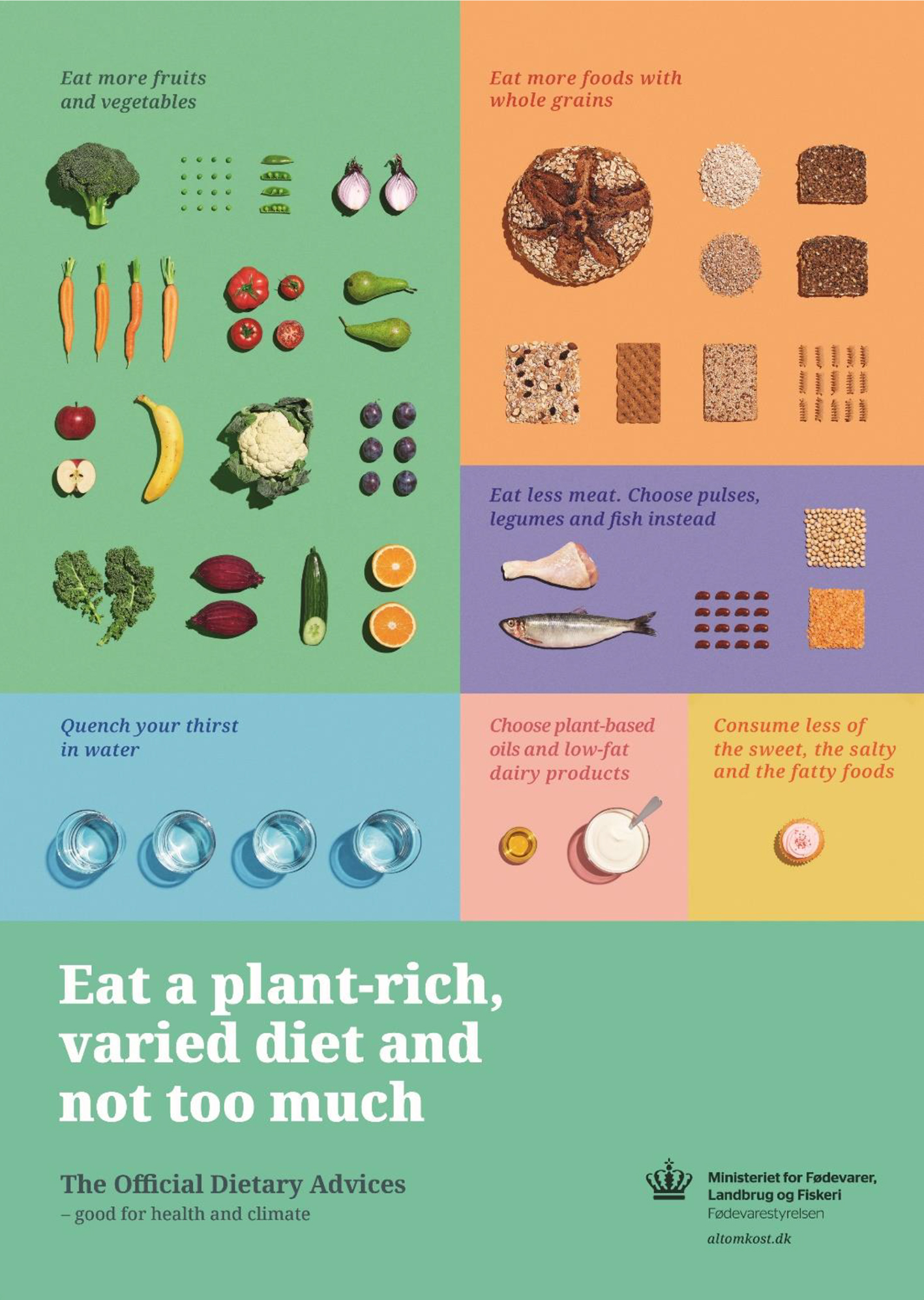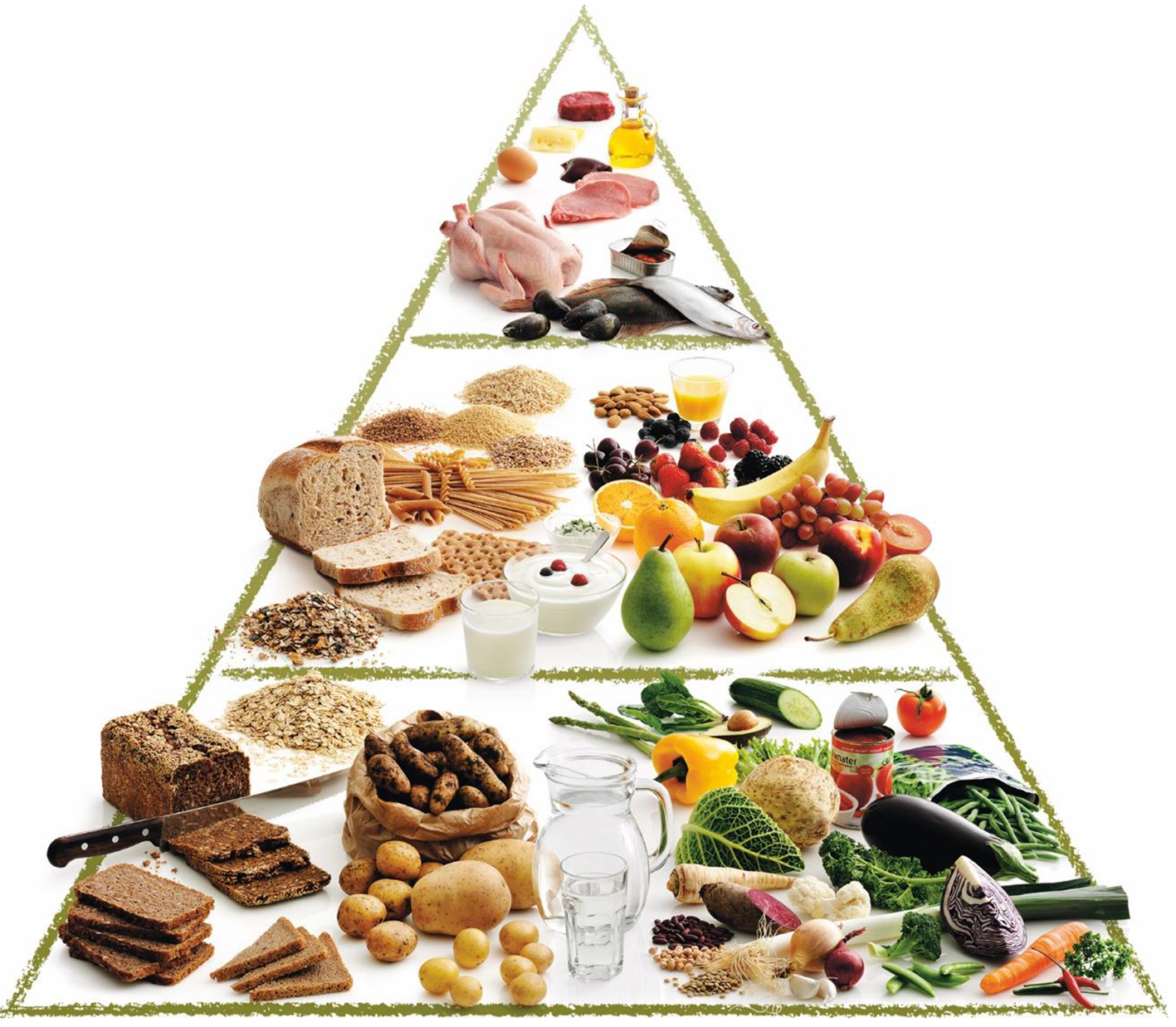
Figure 1. The seven official Danish dietary recommendations 2021 [92] visualized in a poster.
| Gastroenterology Research, ISSN 1918-2805 print, 1918-2813 online, Open Access |
| Article copyright, the authors; Journal compilation copyright, Gastroenterol Res and Elmer Press Inc |
| Journal website https://www.gastrores.org |
Review
Volume 14, Number 2, April 2021, pages 66-80
Managing Genetic Hemochromatosis: An Overview of Dietary Measures, Which May Reduce Intestinal Iron Absorption in Persons With Iron Overload
Figures


Tables
| Promoters | Inhibitors |
|---|---|
| Gastric acid | Gastric acid inhibitors |
| Organic acids: ascorbic acid, lactic acid, tartaric acid | Oxalic acid - oxalates? |
| Phytic acids - phytates | |
| Animal proteins: meat factors | Polyphenols |
| Heme: heme iron | Soya bean proteins |
| Sugar: fructose | Milk proteins |
| Alcohol: ethanol | Egg white proteins and egg yolk proteins |
| Calcium: also inhibits heme iron absorption | |
| Ginger: gingerols? | |
| Turmeric: curcumin depressing hepcidin expression? | Turmeric: curcumin forming chelates with iron? |
| Scientific evidence indicates that a micronutrient- and fiber-dense diet should be adopted to promote health and wellbeing in Nordic populations. |
| The diet should include: 1) Natural fiber-rich foods; 2) Vegetables: dark-green leaves, fresh peas, cabbage, onions, root vegetables and fruiting vegetables; 3) Pulses, legumes, fruits, berries, nuts, seeds, and whole grains as well as fish and seafood, vegetable oils, vegetable oil-based spreads and low-fat dairy products. |
| Such a dietary pattern, especially if low in energy density and combined with a physically active lifestyle, will reduce the risk of overweight. |
| In contrast, dietary patterns characterized by high intakes of red meat, processed meat and food products made from refined grains and sifted flour as well as those high in sugar, salt and saturated fatty acids and trans-fatty acids are associated with adverse health effects. |
| 1. Eat a plant-rich diet with varied foods, do not eat too much. |
| 2. Eat more vegetables and fruits, corresponding to approximately 600 g vegetables and fruits per day. |
| 3. Eat less meat from mammals, at most 350 g per week. Choose pulses, legumes, poultry and fish. Eat fish at least twice a week as main course, and several times a week on an open sandwich, at least 350 g fish per week of which 200 g should be fat fish. |
| 4. Eat foods with whole grains, at least 75 - 100 g whole grains per day. |
| 5. Choose vegetable oils, rapeseed and olive oil, and low-fat dairy products. |
| 6. Eat foods with less sugar, less salt and less fat. |
| 7. Quench your thirst in water, instead of in soda, processed juices, or alcoholic beverages. Drink water both with the foods and between meals. |
| 1. Choose a vegetarian, semi-vegetarian or flexitarian diet. A “veggie-lacto-ovo-poultry-pescetarian” diet seems optimal. Eat varied foods, not too much. Avoid iron enriched foods and iron supplements. Be physically active 30 - 60 min daily. |
| 2. Eat many vegetables and fruits - corresponding to at least 600 g of vegetables and fruits daily; at least half of this must be vegetables. Choose protein rich pulses or legumes, e.g., white-, kidney- or soya beans. Fresh fruits should be eaten between meals. |
| 3. Abstain from red meat from mammals and choose lean, white meat from poultry. Avoid processed meat. Avoid offal, blood containing foods and game meat. Eat no more than 200 g meat from preferably poultry per week, which equates to two dinners per week. Choose fish, eggs, vegetables and protein rich legumes the other days. Eat sustainably sourced fish two to four times a week as main course, and several times a week on an open sandwich - at least 350 - 500 g fish per week, of which 200 g must be fat fish. |
| 4. Choose whole grain products in cereals and bread. Eat at least 75 - 100 g whole grains per day. Avoid iron enriched grains. Choose non-sourdough, yeast-fermented bread with at least 50% whole grain. Add wheat bran to the whole grain flour when baking at home. |
| 5. Choose vegetable oils, rapeseed- and olive oil, and low-fat dairy products. Low-fat milk, and sour milk products with maximum 0.2-0.7% fat, and cheese with maximum 17% fat. |
| 6. Eat less sugar. Choose whole foods and foods with minimal processing and none or little added sugar. Eat less salt - buy foods with low salt content and cut down the use of salt when cooking. |
| 7. Abstain from alcohol. Quench your thirst in water, instead of in soda, processed juices, or alcoholic beverages. Fruit juice should be consumed between meals. Drink green- or black tea, coffee, or low-fat milk with meals, alternatively water or non-alcoholic beer. |